How Do We End the Demand for Drugs in America?
Is it even possible to end drug abuse in America? It will take resolve, commitment and action—and a shoulder-to-shoulder effort.

If it were possible to wave a magic wand and end all demand for illicit drugs, what would happen? There would be no buyers. Drug dealers would have no one to consume their drugs. Drug lords and traffickers would quickly go out of business. The entire supply chain, all the way to Colombian jungles and overseas chemical labs, would go out of business.
At home, we would stop losing our sons, daughters, and neighbors to drug overdoses. Instead of losing more than 100,000 individuals per year to fatal overdoses, we would lose no one. More than one million children could return to homes that were once unsafe due to drug or alcohol abuse or addiction1.
Our incarcerated population would decline. Yes, many people are charged with possessing or selling drugs and incarcerated. However, the Bureau of Justice Statistics also noted that the “[d]rug users in the general population are more likely than nonusers to commit crimes.” For example, common crimes committed by drug users include:
- Violent behavior resulting from the effects of drugs
- Assaults committed while intoxicated
- Violence against rival drug dealers
- Thefts to finance drug purchases or just to sustain life
- Manufacturing methamphetamine2
If we ended the demand for drugs, we would greatly reduce or eliminate these effects of drug use.
Of course, we would have to end the demand for both illicit drugs and prescription drugs that are misused.
So what would really have to happen to end the demand for drugs? Let’s take a look at the different activities that would be involved in eliminating this threat.
The Three Fronts of Fighting Drug Abuse
Traditionally, the effort to stop drug abuse has always had three approaches.
- Drug interdiction: Seizing drugs and addressing trafficking and sales with law enforcement activities.
- Drug treatment: Providing care for the addicted to help them recover from addiction.
- Drug prevention: Educating and supporting individuals and communities to prevent drug abuse and addiction.
Drug Interdiction
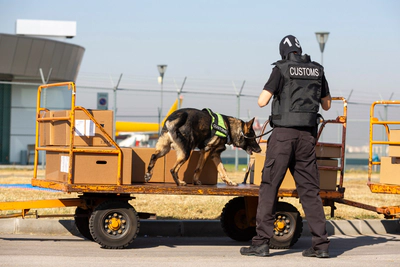
At one time, the prevailing idea in law enforcement was that hard-working officers at federal, state and local levels would be able to “arrest their way out of the problem.” It’s understood by now that this single approach will never be enough. Still, taking a completely hands-off approach would permit the entrance of tens of thousands more pounds of drugs into our country, as well as signaling drug cartels that they are free to overrun America with their illicit products.
In fiscal year 2023, Customs and Border Protection2 reported seizing:
- 155,000 pounds of marijuana
- 175,000 pounds of methamphetamine
- 70,000 pounds of cocaine
- 15,000 pounds of fentanyl
- 2,000 pounds of heroin
As a result of CBP efforts, these drugs did not make it into American cities.
The Drug Enforcement Administration3 also seized massive amounts of drugs:
- 50.6 million fentanyl-laced pills
- 10,000 pounds of fentanyl powder
- 131,000 pounds of methamphetamine
- More than 4,300 pounds of heroin
- Over 444,000 pounds of cocaine
As well, there must be consequences for those willing to sacrifice others for their own profit and power.
Drug Courts
In some cases, the lines between these varying approaches are blurred. Consider drug courts, which in many states have been successful in helping drug users reclaim their sober lives. In a drug court setting, drug interdiction may blend with treatment.
“Drug courts place nonviolent, drug-abusing offenders into intensive court-supervised treatment instead of prison…”
The Department of Justice describes the role of drug courts:

Drug courts place nonviolent, drug-abusing offenders into intensive court-supervised treatment instead of prison. Instead of a traditional adversarial courtroom scenario (the defense versus the prosecution), everyone works together to develop a positive outcome for the offender. Judges interact continually with participants, increasing offender accountability. Extensive studies show that, on average, drug courts reduce recidivism by two-thirds among those who “graduate,” requiring a fraction of the cost of incarceration4.
Drug Treatment
In 2020, more than 1.4 million Americans entered publicly-funded drug treatment programs. Many more individuals will have entered privately-funded or charity-supported programs, or self-help groups like Alcoholics Anonymous5.
But America’s capacity to help does not compare to the number of people who need that help. According to the Substance Abuse and Mental Health Services Administration (SAMSHA), more than 46 million Americans are classified as being addicted or harming themselves with drug or alcohol abuse6.
To provide enough help for those who are harming themselves with drugs or drinks, America must dramatically scale up its drug treatment capacity. Drug treatment must also be more successful to reduce the rate of relapse. According to SAMHSA, of those admitted to drug addiction treatment programs in 2020:
39.4 percent reported no prior treatment episodes, 17.2 percent had one prior treatment episode, and 18.5 percent had five or more previous treatment episodes7.
Without scaling up our treatment facilities and ensuring that the programs offered actually work, we have no way of saving current generations who are currently struggling with drug abuse and addiction.
Drug Prevention
It may be in drug prevention that America can gain the most ground. Of course, we need to continue interdiction efforts and expand access to recovery. If we also greatly expand drug prevention activities, we will raise a new generation of youth who are not interested in drugs. Gradually, our drug abuse and addiction statistics should fall. Not as many people will need treatment. Not as many will be arrested for crimes related to their addictions.
The Department of Justice lists several aspects of effective drug prevention, including these three:
- Information dissemination is designed to increase knowledge and alter attitudes about issues related to alcohol, tobacco, and other drug use and abuse
- Prevention education teaches participants critical personal and social skills that promote health and well-being among youths and help them avoid substance abuse
- Alternative approaches assume that youth who participate in drug-free activities will have important developmental needs met through these activities rather than through drug-related activities4
A comprehensive approach to drug prevention would need to be put into effect at all levels. There needs to be support and education for the individual, the family, school and community. Anti-drug messages should emanate from successful businesspeople, entertainers, teachers, coaches, civic leaders and much more.
Characteristics of Successful Drug Prevention Activities
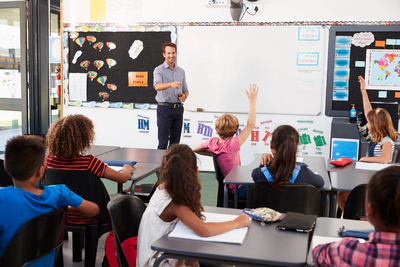
The United Nations Office on Drugs and Crime described the characteristics of drug prevention lessons in school or the community that were more successful:
- They use interactive methods.
- They are delivered through a series of structured sessions (typically 10–15 sessions), taking place once a week, often providing booster sessions over multiple years.
- They are delivered by a trained facilitator (also including trained peers).
- They provide an opportunity to practice and learn a wide array of personal and social skills, in particular, coping, decision-making and resistance skills, especially in relation to substance use.
- They change perceptions of the risks associated with substance use, emphasizing the immediate consequences.
- They dispel misconceptions regarding the normative nature and the expectations linked to substance use8.
Do American prevention efforts meet these criteria? Parents can have the right to review their school system’s drug program and determine if they feel it meets these and other criteria. In fact, they should be able to review the statistics of drug prevention classes. Do the youth receiving those classes actually use fewer drugs after the classes? How many say they have changed their minds about using drugs or drinking?
Strong Life Skills Help Prevent Drug Abuse
The World Health Organization has repeated this message several times: Strong life skills help reduce the risks of youth substance abuse, teenage pregnancy and sexually transmitted illnesses. They recommend family and life experiences that develop these life skills:
- Decision-making
- Creative thinking
- Communication
- Self-awareness
- Coping with emotions
- Problem-solving
- Critical thinking
- Interpersonal skills
- Empathy
- Coping with stress9
Exposing youth to challenges that help build these skills while engaging the guidance of parents and other trusted persons can strengthen youth in relation to resisting drug abuse.
How Did Iceland Fight Drug Abuse?
What really works to reduce drug abuse among youth? Look to Iceland for one approach that worked.
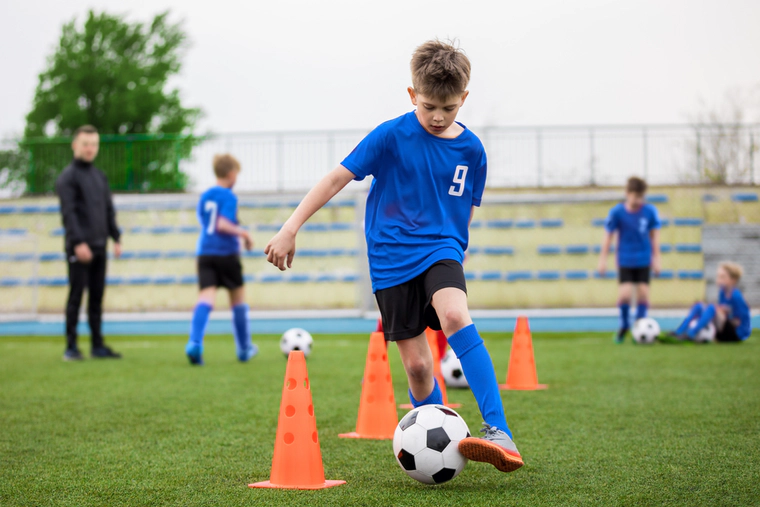
In the 1990s, Iceland had a desperate problem with their teens. Their teens were among the heaviest drinkers in Europe. A very high percentage were cannabis users. The country turned this situation around by initiating teen programs that gave the youth positive ways to “get high on their own brain chemistry.” Youth were offered classes in music, dance, hip hop, art, martial arts and life skills. Facilities were built to offer indoor skating, badminton, ping pong and football. In 2017, The Atlantic reported:
Today, Iceland tops the European table for the cleanest-living teens. The percentage of 15- and 16-year-olds who had been drunk in the previous month plummeted from 42 percent in 1998 to 5 percent in 2016. The percentage who have ever used cannabis is down from 17 percent to 7 percent. Those smoking cigarettes every day fell from 23 percent to just 3 percent10.
Demanding the End of the Demand for Drugs
This kind of change can and must begin in the hearts and minds of Americans. If parents, teachers, coaches, religious leaders and others insist that demand is reduced and then if action is taken at individual, family, school and community levels, a change can come about. Adults must set good examples of sobriety for their children. Community leaders can sponsor one drug-free event after another for their communities. Schools can focus on offering the most effective drug prevention classes for their students. Colleges can adopt zero-tolerance policies toward drug or alcohol abuse on campus and offer struggling students assistance.
It’s not necessary to yield to the idea that drug or alcohol abuse is inevitable. By working together and by insisting on a good result and only a good result, a change can be made and we can begin to raise drug-resistant youth into sober adults. Our children need this inspiration and this support. There is so much counter-effort to the effort to raise drug-free children that it’s going to require a shoulder-to-shoulder effort by parents and communities to succeed.
Sources:
-
“More Kids Are Getting Placed In Foster Care Because Of Parents’ Drug Use.” NPR, 2019. NPR ↩︎
-
“Fact Sheet: Drug Related Crime.” Bureau of Justice Statistics, 1994. BJS ↩︎ ↩︎
-
“Drug Seizure Statistics FY2023.” Customs and Border Protection, 2023. CBP ↩︎
-
“Promising Strategies to Reduce Substance Abuse.” Office of Justice Programs, 2000. OJP ↩︎ ↩︎
-
“Treatment Episode Data Set Annual Report 2021.” SAMHSA, 2020. SAMHSA ↩︎
-
“National Survey on Drug Use and Health 2022.” SAMHSA, 2022. SAMHSA ↩︎
-
“International Standards on Drug Use Prevention.” United Nations Office on Drugs and Crime, 2018. UNODC ↩︎
-
“Life Skills Education.” World Health Organization, 1996. WHO ↩︎
-
“How Iceland Got Teens to Say No to Drugs” The Atlantic, 2017. The Atlantic ↩︎


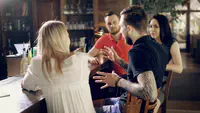

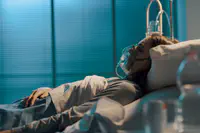

 ®
®